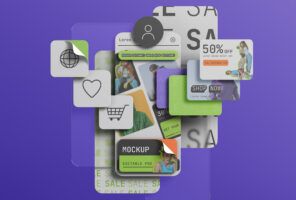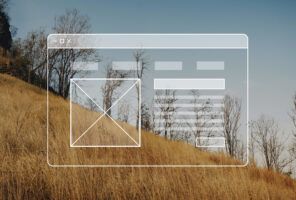The Importance of Design Sprints, Research and Organization
Even if you don’t think you have time to do user research, you do.
So said panelists Jared Jeffers and Taylor Regan at “How to Make a Splash with Iterative Design Sprints,” a virtual meetup for user experience (UX) and research professionals hosted by SPR. The recent meetup covered lessons learned and best practices, end-user research methods, and how to dial in the right level of research into iterative design sprints.
A recap of the meetup reveals four key guidelines around incorporating research into design sprints:
- Make the time
- develop a framework
- create resource libraries
- know your limits
Let’s explore these areas so you can make the most impact with your iterative design sprints.
Make Time for Research
Even if UX and research professionals don’t think it’s possible, both panelists agree that there are ways to include research at every stage of product development. Jared Jeffers, VP of User Experience at Ipsos, said when it comes to making the time for research, he has two tips:
- Stay organized, and
- Gather a pool of people to access quickly
“It’s never impossible to reach out and connect with people through moderated or unmoderated types of engagements,” said Jared. “Being organized ahead of time pays dividends down the road with how quickly you can execute different research activities. But the biggest inefficiency is not having access to participants.”
Jared suggests creating a panel, keep them “warm” or engaged, and keep communicating with them, e.g., let them know when research will happen.
Taylor Regan, Director of User Experience and Design at SPR, agrees. “We should all remain open to doing some type of research,” he said. “UX professionals should feel empowered to be creative.”
Meaning, think outside the box for research and explore multiple ways of getting it done. Taylor’s frank advice: “Don’t be overly precious about stuff. Start with the questions that you want to answer, then be creative with getting people in the room to start teasing out those question, answers, and insights.”

“Research is meant to be cumulative and build upon each other. Pivoting is normal. It’s encouraged. But if you have that framework, pivoting is much easier to do.” ~Jared Jeffers, VP of User Experience, Ipsos
Develop a Framework of Research Gathering Methods
It’s easy enough to say your UX team should develop a framework. It’s another thing to do it. Jared readily admits that staying organized is an area he continues to improve on, but it is vital to saving time and getting quick answers in the moment.
Jared’s steps for creating the framework of research gathering methods and tools are:
- Reflect on the overall business strategy and look at the market you’re designing for
- Identify what you already know, and what you still need to learn about your customers to help design a product that really meets their needs
- Don’t overcomplicate things – simple spreadsheets and calendars help identify different sprints
- List out the hypotheses and assumptions to prove out, then tie your assumptions to specific design activities
- Remember, it’s just a framework and it’s okay if you find you need to change in later sprints
- Get tactical by building lists of methods and tools to help save time
“Research is meant to be cumulative and build upon each other,” said Jared. “If you learn something early on, it may impact what your assumptions were for later stages of the process. Pivoting is normal. It’s encouraged. But if you have that framework, pivoting is much easier to do.”

“You’re not building these reference libraries to be thrown away. You’re going to have these for the long term of the project." ~ Jared Jeffers, VP of User Experience, Ipsos
Create Libraries of Tools & Research
Taylor and Jared agree that creating a library for easy reference pays in the long run. It may take effort, but a highly visual, informational, and interactive tool will create a buzz with your stakeholders.
“You’re not building these reference libraries to be thrown away,” Jared said. “You’re going to have these for the long term of the project.”
But perhaps you prefer to know the data around the product, the people, and their pain points – you’re not much for formal documentation. Taylor advises putting in the effort for empathy building tools.
“If you’re doing design sprints, you’re doing some sort of empathy mapping exercise,” Taylor pointed out. “To create empathy, you have to have understanding. And to truly inform your empathy maps, you must use real user data, not just stakeholder assumptions.”
Taylor said it’s also important to keep your empathy maps categorized so you can leverage them at any time for additional sprints. “It’s essentially creating a go-to kind of catalog,” he said. “It’s going to give you that go-to data that will hopefully save you time down the road.”
The big lesson here? Don’t waste anything. Organize all that upfront work and research. Taylor said how you organize is ultimately up to you, but perhaps buckets could be:
- Behavior patterns
- Shared perceptions across different audience sets
- Shared language or vernacular
- Opportunity space
- Guiding principles arrived at from thematic analysis (by industry, sector, etc)
- Empathy maps
Jared said that all this work to create libraries can expand far beyond your project, too. “It becomes a shared resource,” he said. “The work that you’re doing becomes not only work for your team, but for the whole organization.”

“Do some guerilla recruiting, put up flyers, talk to people on LinkedIn and social media, in a virtual room or physical room to get at those questions.” ~ Taylor Regan, Director of User Experience and Design, SPR
Set Proper Expectations for Research Sprints
While you can prepare and research ahead of time, your two-week research sprint could change. You may learn something that upsets the entire methodology you planned to use or the questions you would ask.
Jared says, that’s fine. “Maybe you’re running behind schedule and don’t have time to evaluate everything at that moment,” he said, pointing back to your work done upfront. “Having that list you’ve created beforehand helps you easily scan and choose what to use.”
Taylor suggests lining up the types of questions to answer, coming to terms with the scope and what you have time to do. And again, you don’t have to be exhaustive.
He also goes back to getting creative when it comes to how you do your research during this 2-week sprint. “Do some guerilla recruiting, put up flyers, talk to people on LinkedIn and social media, in a virtual room or physical room to get at those questions,” Taylor said.
In the end, it comes down to those questions and the breadth of what’s implied.
Final Thoughts
Ultimately, the goal is not to have just a validated solution or direction to go with your product or service. You are also using that research data to build an insights library for reference at any time, something to inform future sprints, and to use across other teams.
“You are creating a baseline so you can continue to grow all the things that may come after,” said Taylor, “whether that’s with the project, with your team, or with your business.”



